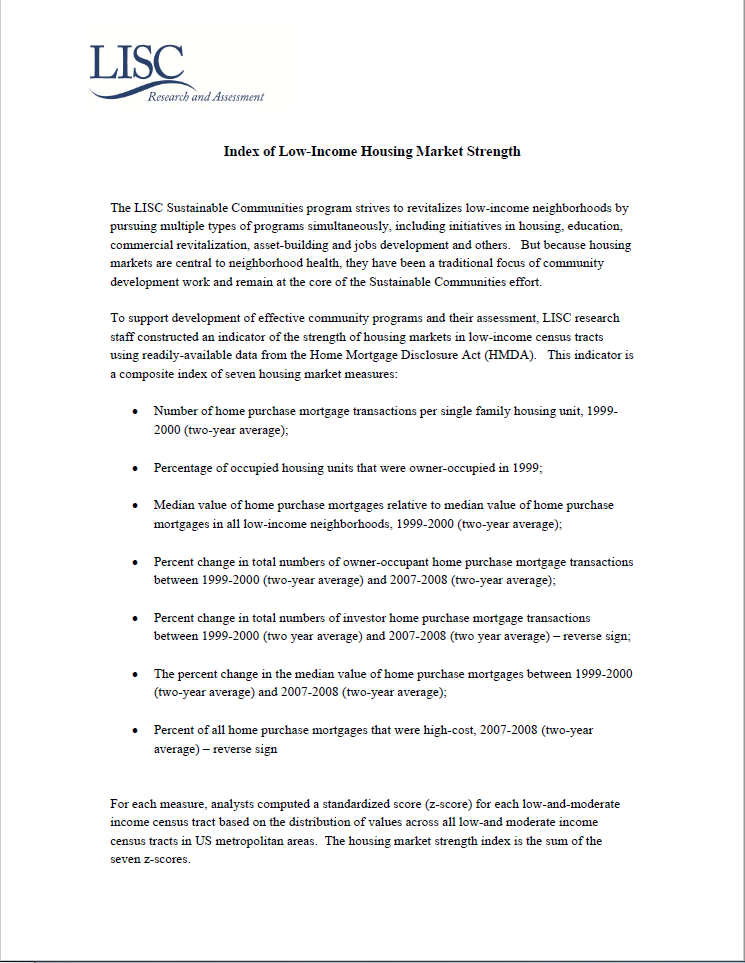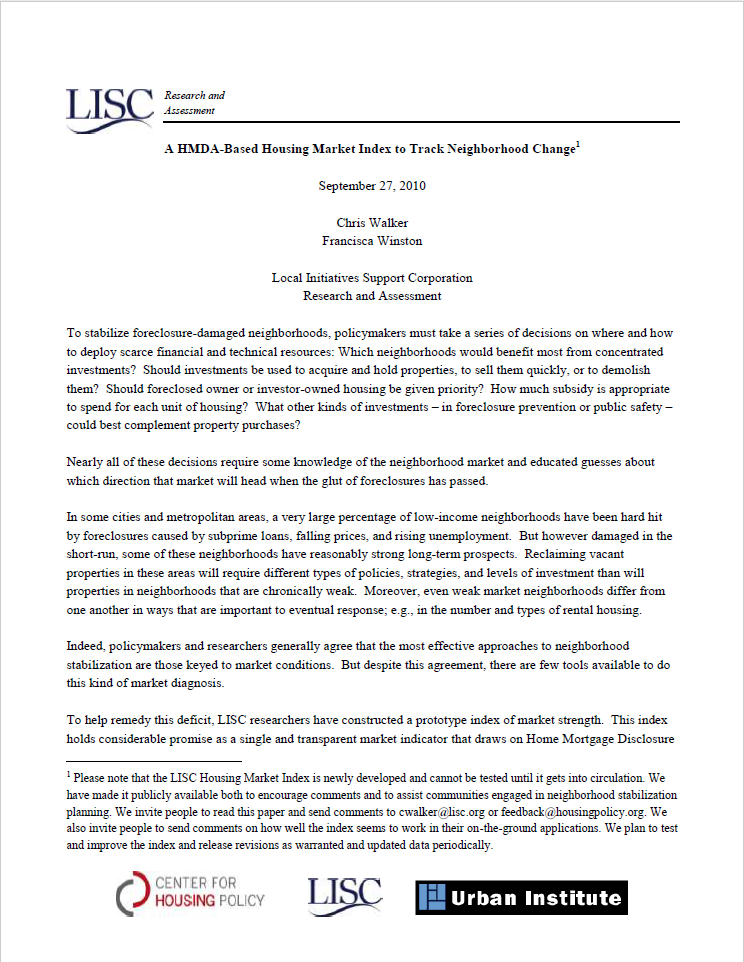LISC Housing Market Index 2010: Summary and Analysis
Policymakers and researchers generally agree that the most effective approaches to neighborhood stabilization are those keyed to market conditions. But despite this agreement, there are few tools available to do this kind of market diagnosis.
To help remedy this deficit, LISC researchers have constructed a prototype index of market strength. This index holds considerable promise as a single and transparent market indicator that draws on Home Mortgage Disclosure Act (HMDA) data, which are readily-obtainable and available at the neighborhood level. The index is comprised of separate indicators of mortgage transaction velocity for owner-occupants and investors, the percent of purchases by owners, the percentage of high cost loans, and median value of all neighborhoods‟ mortgages relative to those in all low-income neighborhoods area-wide.
The excerpt below is from:
"LISC Housing Market Index 2010: Summary and Analysis"
by Christopher Walker and Francisca Winston, LISC
To stabilize foreclosure-damaged neighborhoods, policymakers must take a series of decisions on where and how to deploy scarce financial and technical resources: Which neighborhoods would benefit most from concentrated investments? Should investments be used to acquire and hold properties, to sell them quickly, or to demolish them? Should foreclosed owner or investor-owned housing be given priority? How much subsidy is appropriate to spend for each unit of housing? What other kinds of investments – in foreclosure prevention or public safety – could best complement property purchases?
Nearly all of these decisions require some knowledge of the neighborhood market and educated guesses about which direction that market will head when the glut of foreclosures has passed.
In some cities and metropolitan areas, a very large percentage of low-income neighborhoods have been hard hit by foreclosures caused by subprime loans, falling prices, and rising unemployment. But however damaged in the short-run, some of these neighborhoods have reasonably strong long-term prospects. Reclaiming vacant properties in these areas will require different types of policies, strategies, and levels of investment than will properties in neighborhoods that are chronically weak. Moreover, even weak market neighborhoods differ from one another in ways that are important to eventual response; e.g., in the number and types of rental housing.
Indeed, policymakers and researchers generally agree that the most effective approaches to neighborhood stabilization are those keyed to market conditions. But despite this agreement, there are few tools available to do this kind of market diagnosis.
To help remedy this deficit, LISC researchers have constructed a prototype index of market strength. This index holds considerable promise as a single and transparent market indicator that draws on Home Mortgage Disclosure Act (HMDA) data, which are readily-obtainable and available at the neighborhood level. The index is comprised of separate indicators of mortgage transaction velocity for owner-occupants and investors, the percent of purchases by owners, the percentage of high cost loans, and median value of all neighborhoods‟ mortgages relative to those in all low-income neighborhoods area-wide.

